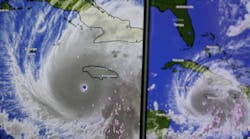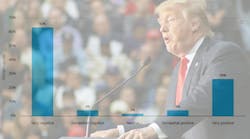In May, EPA sent a letter to all state governors asking for their input on the new definition of “waters of the US,” also known as navigable waters. An accompanying press release noted that the proposed new definition “is in-line with Supreme Court Justice Antonin Scalia’s opinion in the 2006 Rapanos v. United States case. Scalia’s definition explains that federal oversight should extend to ‘relatively permanent’ waters and wetlands with ‘a continuous surface connection’ to large rivers and streams.”
Once the new definition is in place, there will be public comment period, as there generally is for this sort of rulemaking. That hasn’t happened yet, but when it does, I encourage you to be ready with your comments. Whatever your opinions, who better than the people who deal every day with surface water quality to weigh in on this issue? We might not get another chance for quite some time.
Here’s some background, which most of you are probably familiar with, but it’s worth a brief recap in light of the current situation. In 2014, EPA and the Army Corps of Engineers jointly released the Clean Water Rule, designed to clarify what is covered under the protection of the Clean Water Act. The two agencies emphasized that they were not trying to broaden the original scope of the CWA, only to clarify it.
Gina McCarthy, EPA administrator at the time the Clean Water Rule was issued, wrote, “The rule only protects waters historically covered under the Clean Water Act. It doesn’t interfere with private property rights, and it only covers water—not land use. It also doesn’t regulate most ditches, doesn’t regulate groundwater or shallow subsurface flows, and doesn’t change policy on irrigation or water transfers.”
Why did the agencies feel the need to issue the rule at all? They said two separate Supreme Court decisions had muddied the waters, so to speak, and confused the issue of what’s actually covered. Those two cases were Solid Waste Agency of Northern Cook County v. US Army Corps of Engineers in 2001 and Rapanos v. United States in 2006. The first dealt with the question of “isolated waters” such as wetlands that are not adjacent to or tributaries of navigable waters. The Army Corps had argued that some of them were covered by section 404 of the CWA—meaning that a permit was required to discharge dredged material to them, for example—and the court disagreed, removing federal oversight from, by some estimates, close to 80% of the country’s wetlands.
The second case, Rapanos v. the United States, was muddier still, as the Supreme Court did not reach a majority decision. But the case did generate some acrimonious debate among the justices, including fairly scathing rebuttals to the definition that Justice Scalia provided in the plurality opinion—at one point he referred to “swampy lands”—which EPA is citing now as its model. The case was ultimately remanded to a lower court, leaving open to interpretation whether, say, ephemeral streams and wetlands within floodplains are “waters of the US” or not. (These are quick-and-dirty summaries of the two cases. Many excellent summaries of and commentaries on both of them are available online and are worth seeking out.)
Without the Clean Water Rule, EPA and the Corps said, the effects of the Supreme Court’s decisions left nearly 60% of the nation’s streams and wetlands—and the drinking water sources for about a third of the US population—essentially unprotected.
Once it was proposed, the rule faced challenges in court—several states, including Oklahoma, of which EPA administrator Scott Pruitt was then attorney general, sued to block it—and was stayed by the Sixth Circuit Court of Appeals in 2015. A presidential executive order in February of this year called for a review of the rule with an eye toward balancing pollution prevention with promoting economic growth. The move was applauded by the agricultural and development industries, which had strongly opposed the Clean Water Rule.
There will be two public comment periods coming up: one after the Code of Federal Regulations is changed to reflect the definition of “waters of the US” that was in place before the Clean Water Rule was issued, and another—this is the critical one—when the new, Scalia-related definition is proposed.
You might agree with the narrower definition of waters of the US, or you might want to see the Clean Water Rule’s broader definition remain in place; you might agree with the administration that the jurisdiction of these waters would be better left to the states, or you might favor consistent federal oversight. In any event, the outcome of this process is likely to affect your job in several ways. I urge you to offer your informed opinion in the upcoming debate. The public comment periods will begin after the rules are published in the Federal Register. EPA’s page on the rulemaking ( http://bit.ly/2r9kImY ) will post information, and we will post information and deadlines on Stormwater’s website as well.
About the Author
Janice Kaspersen
Janice Kaspersen is the former editor of Erosion Control and Stormwater magazines.


